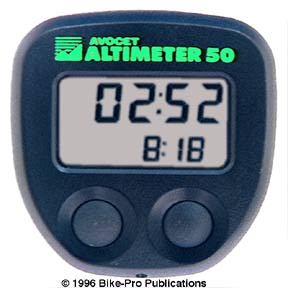combining GPS and barometric altimetry: intro
 A discussion on the GoldenEmbed mailing list got me thinking.
A discussion on the GoldenEmbed mailing list got me thinking.GoldenEmbed is an open source hardware project to produce an ANT+ compatible cycling head unit: one which can record power from a variety of ANT+ compatible power meters such as Quarq Cinqo, SRM, and MetriGear Vector. It's built out of some nice modules available from SparkFun, basically a modern version of what Radio Shack used to be: a source for electronic hobbyists. The project was inspired by the Quarq Qollector prototype shown at Interbike, and Tim Clark of MetriGear's similar ANT+ sniffer used in Vector development.
 The MetriGear data logger which in part inspired GoldenEmbed
The MetriGear data logger which in part inspired GoldenEmbedSo some of the GoldenEmbed guys mentioned you could go beyond ANT+ sniffing and incorporate GPS and barometric altimetry: SparkFun sells all of the required hardware. Cool! This enables the development of the functionality Garmin provides.
So the question is: what's the best way to manage both GPS-based altimetry and barometric-based altimetry to get a single altitude profile? Well, first consider the characteristics of each.
GPS tends to be very accurate, but not very precise. The signal tends to jump around by a few meters from the "true altitude", and the signal tends to drop out when line-of-sight to satellites is lost.

Avocet 50, the first barometric-altimeter equipped bike computer
On the other hand, barometric altimetry tends to be more precise, but less accurate. Barometric altimeters derive altitude from air pressure, given the air temperature. But at a given temperature and altitude, pressure can vary as the weather changes. This is a core feature of weather prediction: dropping pressure often foretells the arrival of a storm. So barometric altimetry needs to be calibrated. Barometric altimeters, such as the original altitude-enabled bike computer, the much-loved Avocet 50, needed to be initialized each ride with a starting altitude. Then the rider hoped for stable weather. Nevertheless, upon returning to the same spot hours later, the altitude had typically shifted.
So the proper approach is to combine the two: use the GPS unit, which tends to drop out and jump around, to regularly calibrate the barometric altimeter.
I'll describe more on that next time.

Comments
g